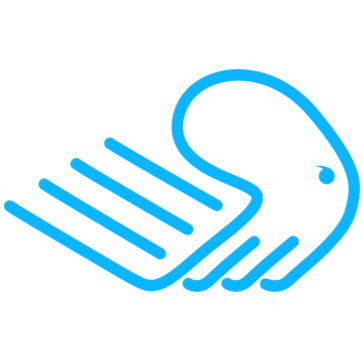
Create Websites with CHEETAH
The most important design elements at a glance (10)
A lot of images already categorized as photos, icons (small graphics like arrows etc.), button images and even animated graphics (gif's) can be found clearly listed also in the Builderall Images repository. It's worth having a quick look through the graphics provided here to get at least a small overview of them.
Tip: You can of course construct your own "design elements" in "Cheetah" (for example, on a box element as a container), which you then save in your own elements palette.
Navigation elements - creating page selection menus
At the latest when you create websites that consist of a larger number of individual pages, you have to think about the topic of "navigation" between these pages (keyword: "internal linking"). There are a lot of possibilities here. The most common is still the so-called "side menu" in the form of a "menu bar" in the header of a web page. All other pages (and possibly sub-pages) of the web presentation are linked via this.
Such a side menu can be quite elaborate, as this example on the website of https://www.wissenschaft.de/ shows:
Such a design is, of course, also possible in "Cheetah".
Before we take a closer look at the creation and configuration of such navigation elements, we would like to say a few words about website navigation in general. It provides orientation and easy access to content, which is usually arranged on different pages of a website. It therefore has a major influence on user behavior. The more confusing a menu structure is, the more difficult it is for visitors to find the content they are interested in - and they quickly leave again... To prevent this from happening, the page and menu structure should be carefully planned. Corresponding structure diagrams can be a help. Of course, there are also pages that do not necessarily have to be placed in the main navigation of a website. These include the imprint, data protection statements, disclaimers and, under certain circumstances, contact forms. These are best made accessible to interested visitors via simple text links (e.g. in the footer). It can also be useful to design several page-dependent menus so as not to overload the menu on the homepage. Also, drop-down menus and submenus should only be used when it really makes sense. Otherwise, a well thought-out one-dimensional menu structure is often better than a menu where you have to click through just to find out what other page links are hidden in it.
Note: In "Cheetah", so-called "burger menus" are automatically used in the mobile view, which are derived from the desktop menu structure. from the desktop menu structure.
You should pay special attention to the meaningful labeling of the individual menu items. It should clearly indicate the content of the web page linked to it.
The horizontal navigation, placed in the header area of a web page, has become firmly established over the course of time. But of course there are other ways to break this tradition. One of them is the vertical navigation outsourced to the left (and sometimes right) margin. This menu approach, which has its advantages, can be found more and more often on websites. By using sticky bars as a container, you can keep them visible even when scrolling a page.
Vertical menus on the left margin of a web page have a number of other advantages beyond the fact that they are somewhat unusual and thus attract attention. After all, the average website visitor first looks at the top of the page and "scans" the left area with his eyes (web designers refer to this as an "F-pattern"). And why not take advantage of this? Besides, the "length" of a vertical menu is not really limited in contrast to a "horizontal" menu (page width). Scrolling in the area of user guidance has become completely established (also thanks to the "wheel" on the mouse). There are also more design approaches for vertical navigation structures that go beyond pure text-based navigation. How about using icons instead of text for the individual menu items, for example?
Remember: Navigation wants to be seen!
The navigation elements offered by "Cheetah" are highly configurable, so that you can use them to build both horizontal and vertical menus in all possible design variants.
For example, you can find some templates for complex menus in the element selection under "Big menu":